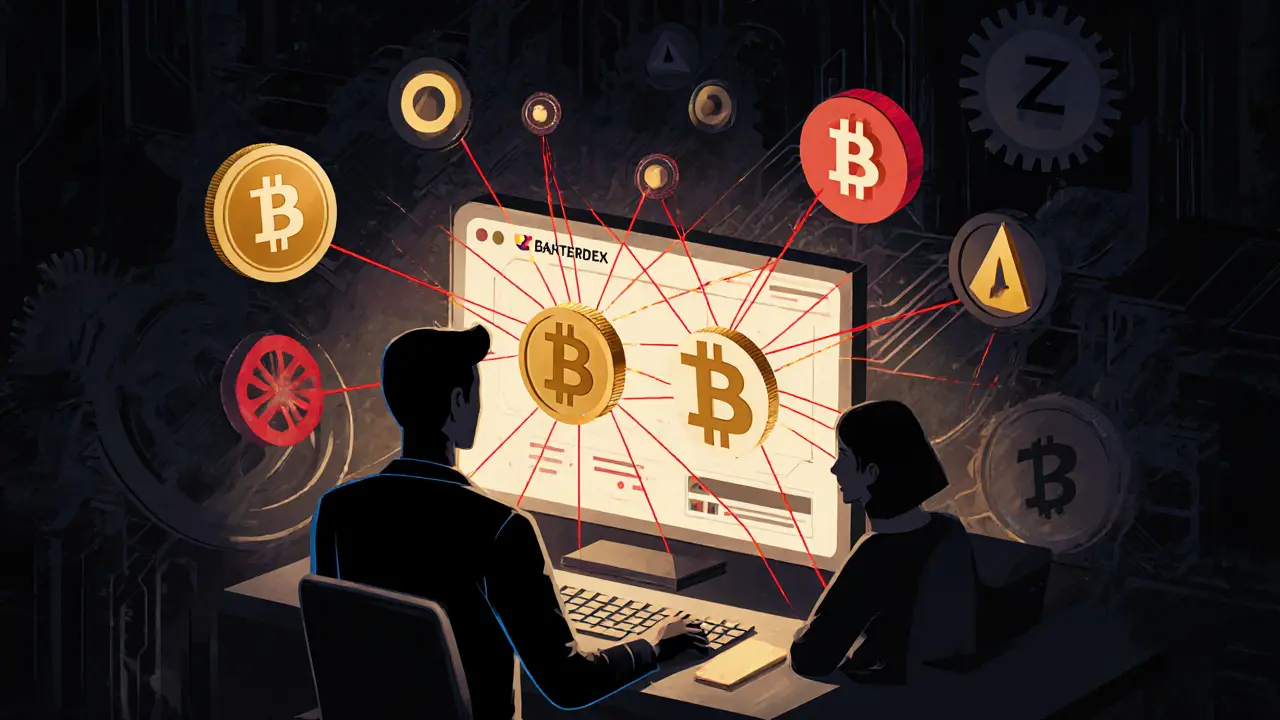
BarterDEX was the first practical atomic swap DEX, letting users trade crypto peer-to-peer without KYC or custody. Now replaced by AtomicDEX, it laid the foundation for true decentralized trading across blockchains.
When you trade crypto on BarterDEX, a non-custodial decentralized exchange that enables peer-to-peer trading using atomic swaps. Also known as Komodo BarterDEX, it lets you swap coins like Bitcoin, Ethereum, and Litecoin without handing your keys to a middleman. Unlike centralized exchanges where you deposit funds and trust the platform, BarterDEX runs on your device. Your money never leaves your wallet. That’s not just a feature—it’s the whole point.
At its core, BarterDEX relies on atomic swaps, a blockchain technology that allows two parties to exchange different cryptocurrencies directly, without a trusted third party. This means you can trade BTC for LTC without needing an intermediary like Binance or Coinbase. The swap either completes fully or fails entirely—no partial trades, no stolen funds. This is the same tech that powers privacy-focused networks like Komodo, and it’s why BarterDEX still matters even as newer DEXs pop up. You don’t need KYC. You don’t need to prove who you are. You just need a wallet and the right coins. That’s why it’s still used by traders in countries with strict crypto controls, and by people who want to avoid surveillance.
BarterDEX also supports non-custodial trading, a model where users retain full control of their private keys and assets at all times. This isn’t just about security—it’s about freedom. If an exchange gets hacked, you’re safe. If they freeze your account, you’re untouched. And if they go offline? You still own your coins. That’s a big deal when you look at the list of exchanges that have vanished overnight—CrossTower, Domitai, even big names that lost user trust. BarterDEX doesn’t have a CEO to blame. It doesn’t have a server farm to shut down. It’s code. And code, if built right, lasts.
What you’ll find in the posts below aren’t ads or hype. They’re real user experiences, breakdowns of how atomic swaps actually work on different chains, and warnings about the risks that come with running your own node. Some posts cover how BarterDEX compares to other DEXs like Karura Swap or Balancer V2. Others dig into why certain coins don’t trade well on it, or how liquidity issues can make swaps take hours instead of seconds. There’s even a post about how regulatory pressure is slowly pushing users toward tools like this—because when governments crack down on exchanges, people turn to systems they can’t shut down.
If you’ve ever wondered how to trade crypto without trusting anyone, BarterDEX is one of the oldest and most proven ways to do it. It’s not flashy. It doesn’t have a mobile app that looks like a game. But it works. And in a space full of scams and centralized traps, that’s worth knowing.

BarterDEX was the first practical atomic swap DEX, letting users trade crypto peer-to-peer without KYC or custody. Now replaced by AtomicDEX, it laid the foundation for true decentralized trading across blockchains.